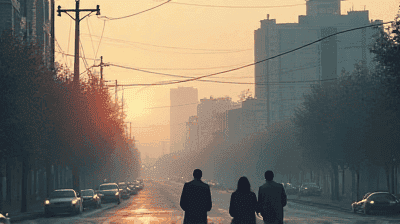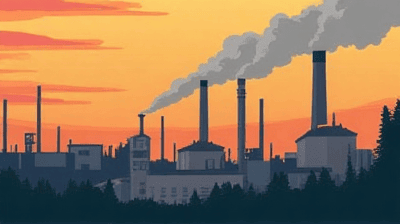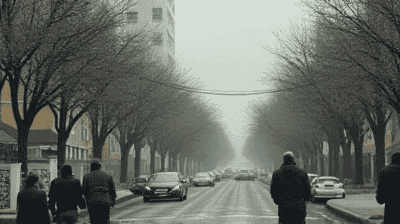
Air pollution is one of the most pressing environmental challenges of our time, with profound impacts on human health, ecosystems, and climate. However, while air quality deteriorates across various regions, the burden of pollution does not fall equally on all communities. Historically marginalized groups, particularly those in neighborhoods affected by redlining, experience higher rates of exposure to air pollution and related health issues.
Redlining originated in the United States during the 1930s as part of New Deal housing programs. The Home Owners’ Loan Corporation (HOLC) created maps to assess the risk associated with lending in different neighborhoods. These maps classified areas into four categories: A (best), B (still desirable), C (definitely declining), and D (hazardous). Neighborhoods labeled as D—often predominantly Black areas—were marked in red, indicating that loans and insurance were practically unavailable.
This practice not only restricted access to mortgages for minority families but also facilitated disinvestment in these communities, leading to deteriorating infrastructure, poor public services, and limited economic opportunities. The effects of redlining have persisted, leaving lasting socioeconomic disparities and environmental vulnerabilities.
Although redlining was officially outlawed by the Fair Housing Act of 1968, its repercussions continue to affect urban landscapes today. Many neighborhoods that were once redlined are still grappling with underinvestment in public goods, including healthcare, education, and infrastructure. The historical disinvestment translates into socio-economic disadvantages, exacerbating health disparities among residents.
Communities affected by redlining often have limited political power, affecting their ability to advocate for environmental protections and improvements in public health. Consequently, these neighborhoods frequently bear the brunt of environmental harm, including exposure to high levels of air pollution.

Air pollution is a complex blend of harmful substances, including particulate matter (PM), nitrogen oxides (NOx), sulfur dioxide (SO2), and volatile organic compounds (VOCs). These pollutants arise from various sources, including vehicle emissions, industrial processes, and the burning of fossil fuels. The impacts of air pollution on public health are profound and pervasive.
Short-term exposure to air pollution can lead to:
Prolonged exposure to air pollution is associated with severe health consequences, including:
The burden of air pollution is not distributed evenly across society. Marginalized communities, particularly those affected by redlining, experience higher levels of pollution and worsen health outcomes. Research consistently demonstrates that communities of color, low-income neighborhoods, and areas with historical redlining are significantly more likely to be located near sources of pollution, such as highways, industrial facilities, and landfills.
The historical practice of redlining has led to the geographic concentration of environmental hazards in communities of color. Numerous studies indicate that neighborhoods with a history of redlining are more likely to have higher concentrations of airborne pollutants. For example, a 2020 study published in the journal Environmental Science & Technology Letters found that neighborhoods identified as previously redlined experienced 25% more overall air pollution than non-redlined areas.
These geographic disparities often lead to a feedback loop where disadvantaged neighborhoods remain trapped in cycles of pollution, health issues, and economic decline.
Redlined neighborhoods often suffer from economic disinvestment, leading to underfunded public services and infrastructure. This lack of investment creates conditions that exacerbate exposure to air pollution:
The health impacts of living in redlined neighborhoods are profound. Studies show that residents in these areas experience significantly higher rates of respiratory illnesses, cardiovascular diseases, and other chronic conditions linked to air pollution exposure.

In recognition of the disparities in environmental health, the concept of environmental justice has gained traction. Environmental justice emphasizes the need for equitable policies that address the disparate burdens of pollution on marginalized communities:
To mitigate the effects of air pollution on historically marginalized communities, stronger regulatory measures are needed.
Empowering local communities to take action can lead to impactful, grassroots efforts to address air pollution discrimination.
The Clean Power Plan, introduced by the Obama administration, aimed to reduce carbon emissions from power plants while taking into account the needs of disadvantaged communities. By promoting clean energy investments and setting state-specific emissions goals, the plan sought to improve air quality, particularly in areas affected by pollution.
While the Clean Power Plan faced significant political opposition, its focus on addressing the needs of marginalized communities reflected a growing awareness of the disparities linked to air pollution and redlining.
The Environmental Justice Collaborative Problem-Solving Program, initiated by the U.S. Environmental Protection Agency (EPA), empowers communities to work together and address environmental challenges. By providing resources, technical assistance, and training, this program helps communities develop tailored solutions to pollution-related issues.
Several case studies demonstrate the success of this program in tackling air pollution in historically marginalized neighborhoods. Community-driven initiatives have resulted in cleaner air, increased green spaces, and enhanced access to resources.
The climate justice movement embodies the interconnections between climate change, air pollution, and social justice. Grassroots organizations advocating for climate justice prioritize the voices of marginalized communities facing the brunt of environmental degradation.
Their work emphasizes community empowerment, engagement, and collaboration, resulting in successful campaigns to implement policies that address air pollution and advocate for systemic change.

To rectify the ongoing consequences of redlining and combat air pollution discrimination, it is essential to acknowledge and address historical injustices. This includes:
Policy-makers must prioritize the health of communities historically impacted by air pollution. Efforts should include:
Building community resilience against the effects of air pollution requires:
The legacy of redlining continues to shape environmental health outcomes, particularly in terms of air pollution exposure and public health disparities. Communities affected by historical discrimination not only face disproportionate levels of air pollution but also experience the compounded effects of social and economic inequities.
Recognizing the connections between air pollution discrimination and redlining is vital to promoting equitable environmental health. By adopting community-driven solutions, strengthening regulatory frameworks, and addressing historical injustices, we can pave the way for healthier, more equitable futures for all communities.
As society moves forward, it is imperative to elevate the voices of those historically impacted by environmental injustices. By advocating for change and fostering collaboration, we can work together toward a more just and sustainable world.